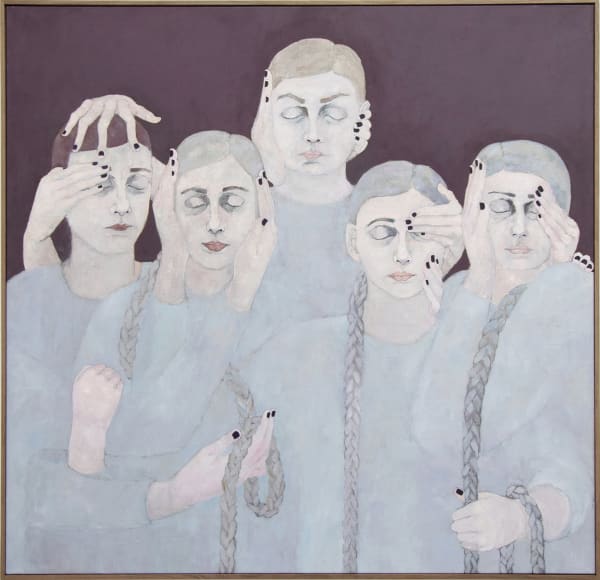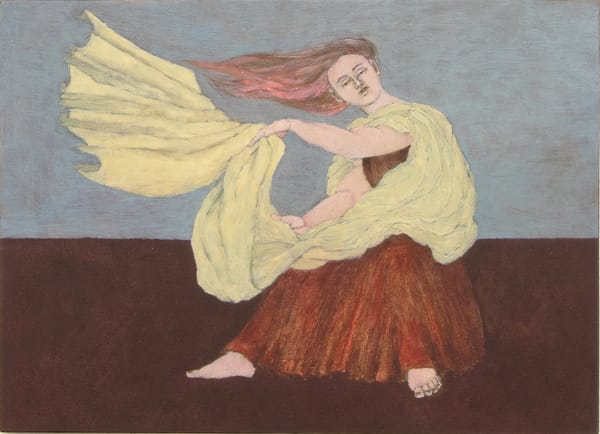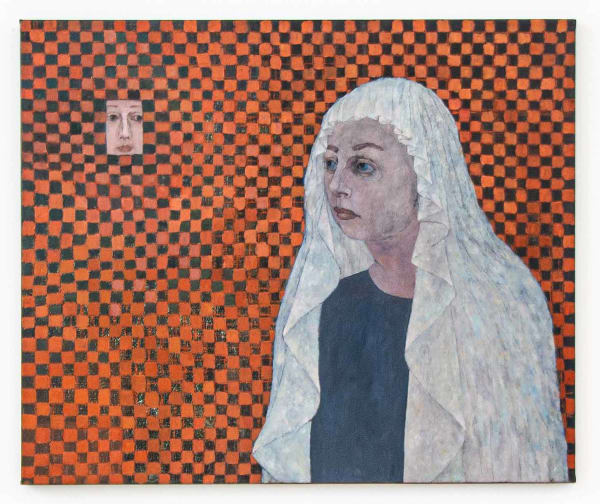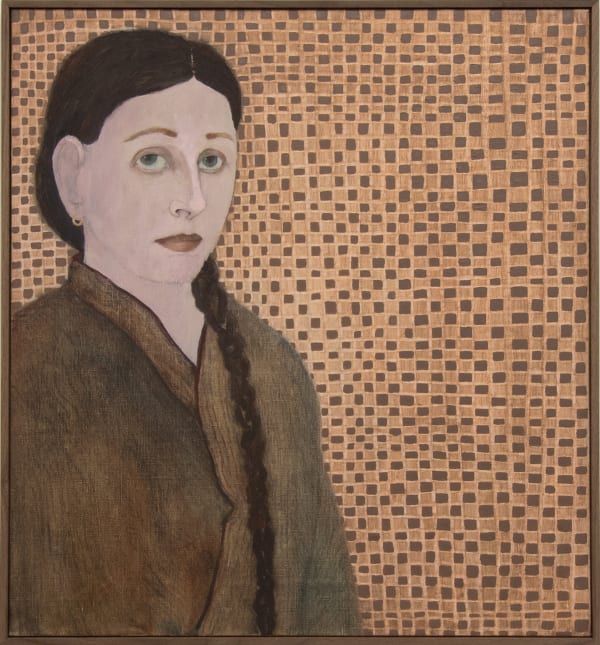In Waiting: Humlan Lange
When Humlan Lange went to the Royal Institute of Art in the eighties, painting was supposed to be fierce. Paitning little characters? I think not! It was supposed to be big, flaunty and with a lot of colour. One probably dares to say, that it is the antithesis of the painting that can be seen in the exhibition In Waiting. Here, Lange represents a different type of figurative painting of a kind one rarely sees today. At first glance, one seems affected by a recognition, perhaps it is Italian Renaissance painting that appears before the inner eye. It soon turns out that her painting is something very special. In the paintings there are rooms, rooms that are scenes that take place in the picture. The curtain has just risen, and something is taking place in front of the viewer. A peaceful act, a quiet episode. The artist believes that a shyness and a caution, traits that permeate her own character, also distinguish her painting. The quiet, subtle movements that are expressed in actions, gestures and hand movements come from her own experience of moving in a room or a context of a social nature. These become concentrated in something small that takes place in the characters' own room. Lange has a special fondness for painting the drapes of clothes (she holds a journeyman's certificate in dress sewing) and how they fall on a body where a body part can protrude where it really cannot, biologically that is. In a painting, it does not necessarily have to be true: you can play with both bodies and identities. Lange builds up stories about her characters, which she then talks to. A topic of conversation between the artist and the characters can be: will this be right or wrong? Sometimes the painting process of the figures appearing in the painting is swift, sometimes it takes forever. It seems as if the painting originates from the time before the development of the central perspective, such as Japanese painting or early Renaissance painting. In this way they appear timeless in their form, seemingly floating in space. The figures can be painted, but they are mute. Consequently, it is in the field of tension that something is needed; someone who has to speak. The creation lies in looking for what makes it voluble. That which speaks back to one, utters something, animates the painting and gives it a content. Otherwise, there is no effect or agency.
Humlan Lange finds inspiration in such diverse expressions as Christian iconography, Asian instructional signs for escape in case of fire or Albertus Pictor's motifs in the medieval church vaults. However, inspirations can come from pretty much anywhere: music, a postcard, a trip. Albertus Pictor has the funny, the subtle and the humorous. In the older Christian art, women are generally not allowed to make the same gestures as men, their space is limited. Lange appropriates them, liberates them and allows them to take their place. Let them occupy the room and be seen. She gives them a place to move and gesture, or not: the choice is theirs. With a muted colour scheme reminiscent of Alice Neel, Agnes Martin or Balthus, Lange's work appears classic in form and contens, without having any direct ties to a tradition. Rather, they are taken out of context and placed in environments that are dominated by a few individual colours and occasionally by grid patterns. Sometimes, things happen outside the picture space. Someone is pointing or signing with their fingers, pointing to something you may never find out. Something for the inaugurated doodle?
The title In Waiting refers to a quiet moment, the moment of silence that awaits something that is about to transpire. At first glance, waiting is a quiet occupation. But other titles and motifs in the exhibition also testify to a movement, where someone enters the picture room from the outside. As if the wind brings the figures in, grabs the folds of the drapes or caresses a lock of hair. Despite this, it remains a quiet act of waiting. The figures are chosen to be the bearers of the images, nothing more. Like tableaux, the processes take place, and as an observer you are given the task of interpreting the gestures that are made. Both larger movements and smaller ones, which indicate that the posture of the body and the gestures of the hands are among the smallest components of our body language.
/Marcel Engdahl
Humlan Lange (b. 1957) lives and works in Stockholm. She is educated at the Royal Institute of Fine Art in painting and mural painting, as well as at Konstfack in textile, and in weaving at Handarbetets vänner. She has exhibited separately and in group exhibitions in Sweden and several times in Japan, where she also lived for a period. Lange has made several public works, including for the City of Stockholm and Stockholm and Uppsala County Councils. She is represented in the Statens konstråd's collection and Västerås Art Museum's collection, to name a few.











